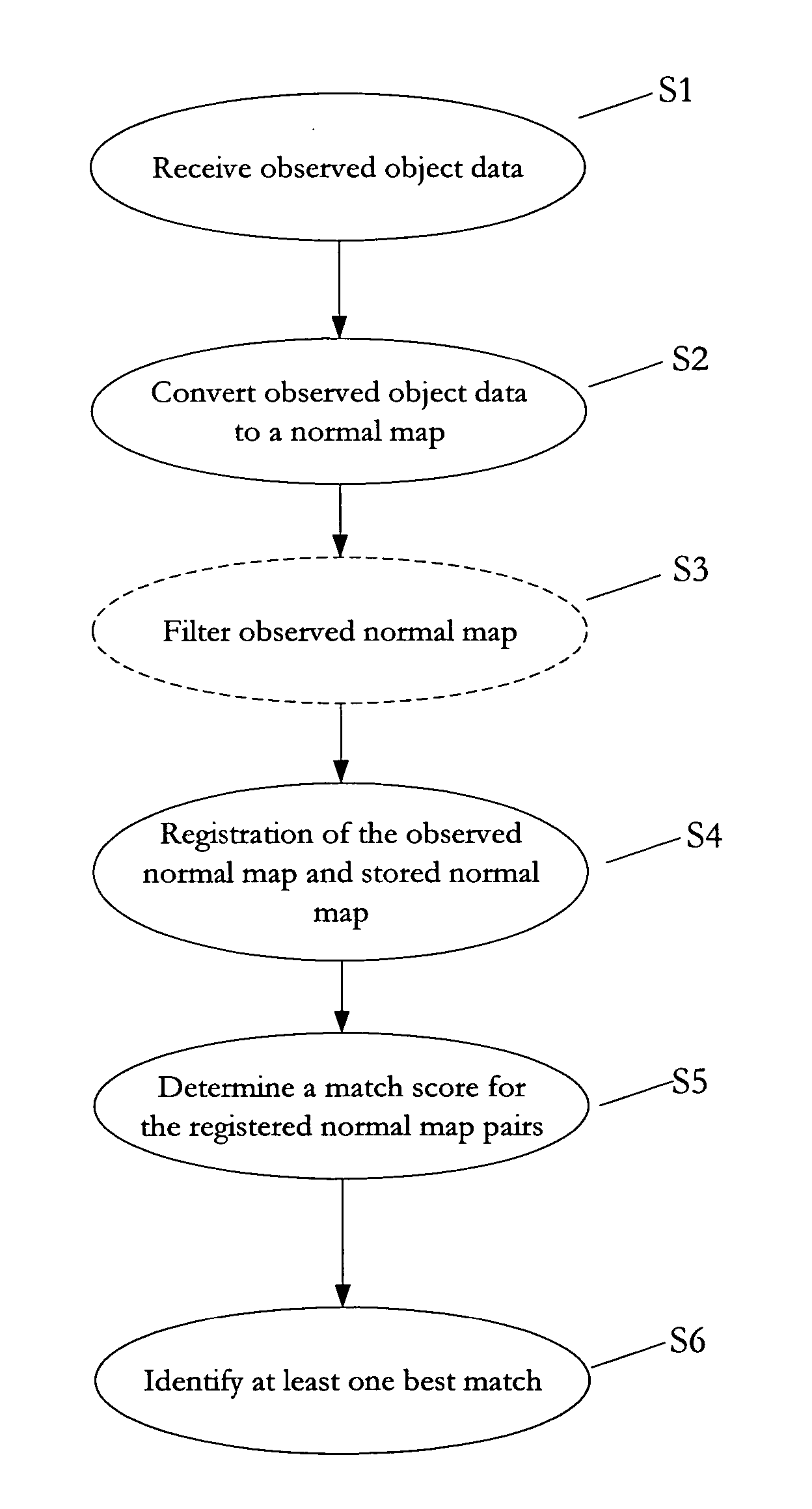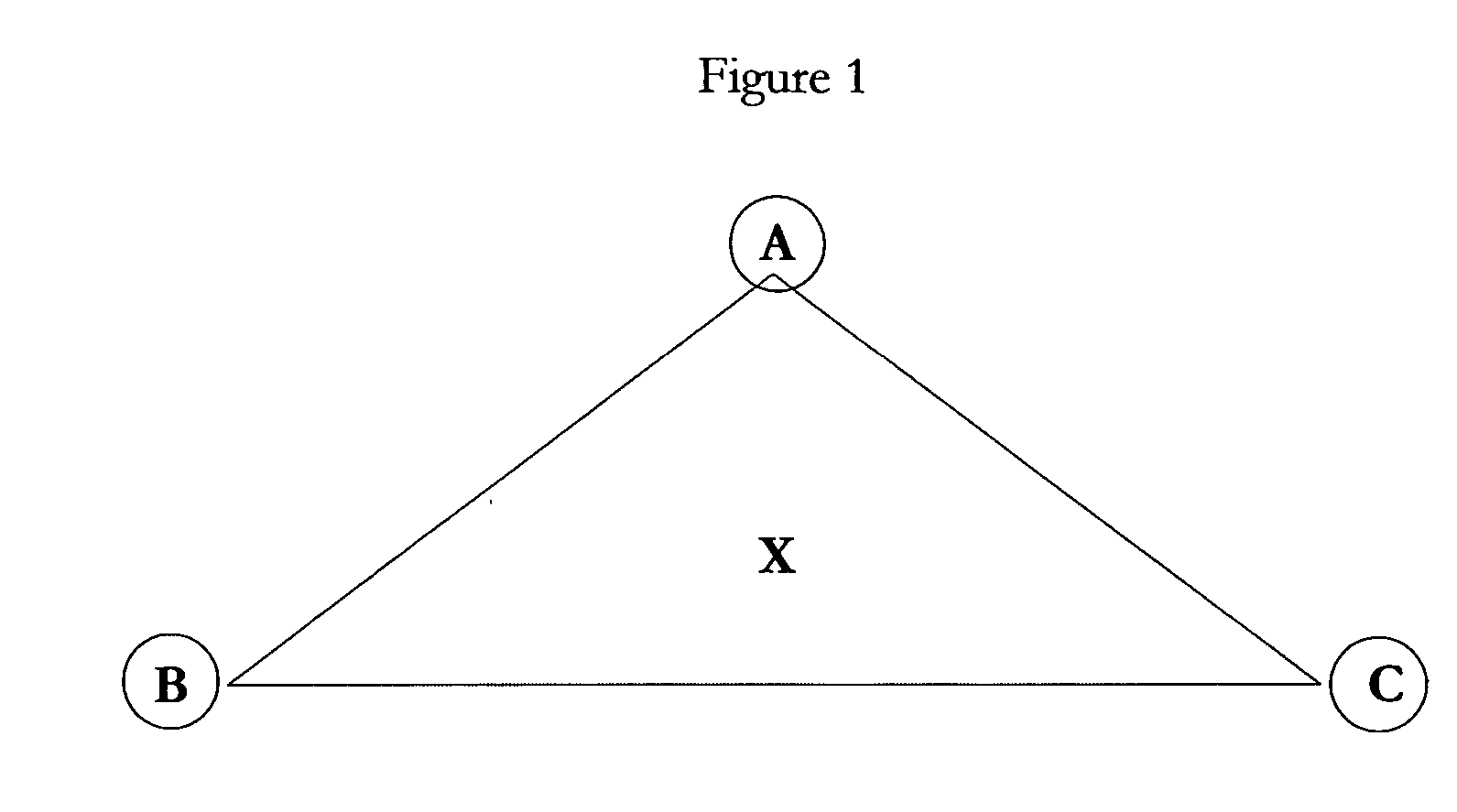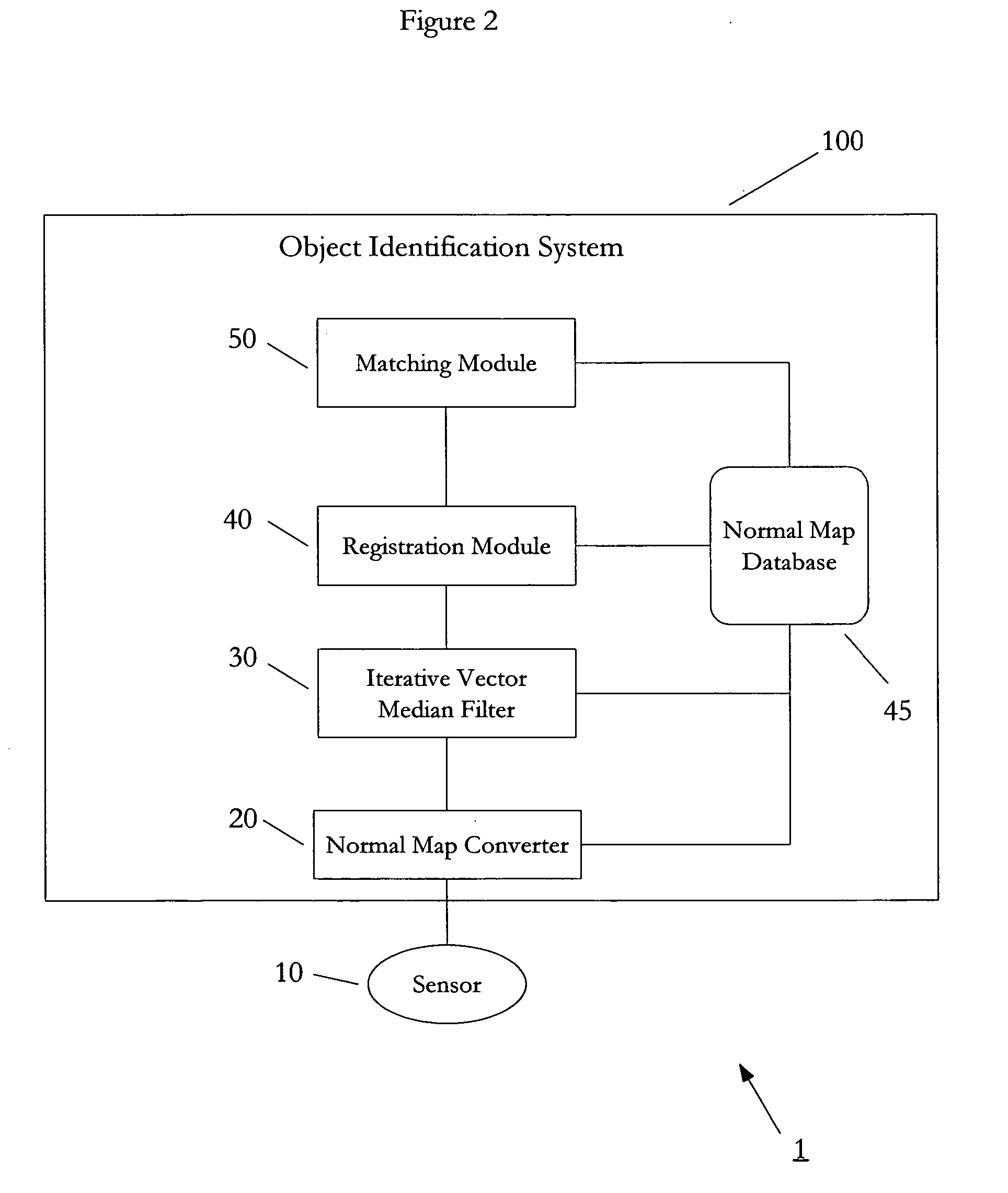Method and system for filtering, registering, and matching 2.5D normal maps
a normal map and filtering technology, applied in the field of automatic target recognition (atr), can solve the problems of blurring, unacceptable signal degradation, and corrupting and limiting such information,
- Summary
- Abstract
- Description
- Claims
- Application Information
AI Technical Summary
Benefits of technology
Problems solved by technology
Method used
Image
Examples
Embodiment Construction
[0027] The present invention relates to a method and a system for monitoring, analyzing, and recognizing one or more objects of a given environment, referred to as an automatic target recognition environment.
[0028]FIG. 2 depicts an exemplary automatic target recognition environment 1 managed by the methods and systems according to the present invention. According to an embodiment of the present invention, the ATR environment 1 includes an object identification system 100 communicatively connected to one or more sensors 10 configured to monitor one or more scenes. The term “communicatively connected” is intended to include any type of connection, whether wired or wireless, in which data may be communicated. The term “communicatively connected” is intended to include a connection between devices and / or programs within a single computer or between devices and / or programs on separate computers.
[0029] According to an embodiment of the present invention, as depicted in FIG. 2, the objec...
PUM
 Login to View More
Login to View More Abstract
Description
Claims
Application Information
 Login to View More
Login to View More - R&D
- Intellectual Property
- Life Sciences
- Materials
- Tech Scout
- Unparalleled Data Quality
- Higher Quality Content
- 60% Fewer Hallucinations
Browse by: Latest US Patents, China's latest patents, Technical Efficacy Thesaurus, Application Domain, Technology Topic, Popular Technical Reports.
© 2025 PatSnap. All rights reserved.Legal|Privacy policy|Modern Slavery Act Transparency Statement|Sitemap|About US| Contact US: help@patsnap.com



